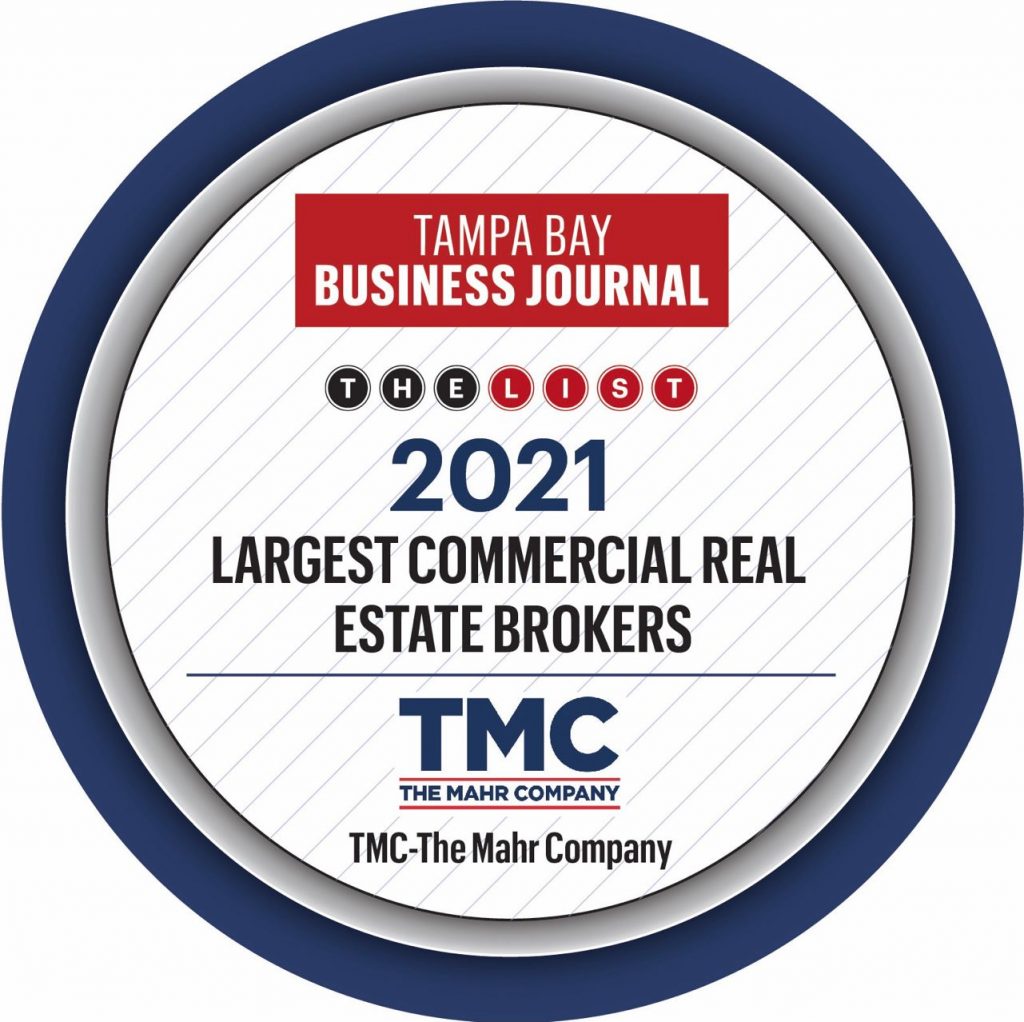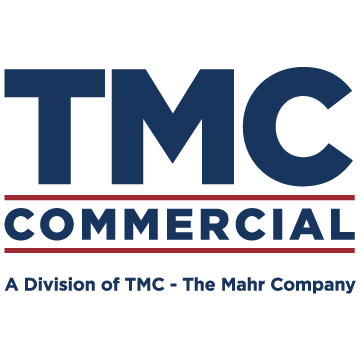
TMC- The Mahr Company | Our greatest accomplishment for YOU is not behind us | It is yet to be |Your goals and commercial real estate needs | Whatever they may be| Wherever they make take us |Whatever they may require | Is our commitment to you |TM
Navigating Tampa’s Commercial Real Estate Scene with TMCCommercialRealEstate
Are you on the lookout for top-notch commercial real estate brokers in Tampa? Look no further! TMCCommercialRealEstate is your dedicated partner in navigating the vibrant and dynamic landscape of commercial real estate in the Tampa Bay area.
Why TMC Commercial Real Estate Stands Out:
- Connector.
Sales and Acquisitions
Looking to invest in a prime commercial property in Tampa? Our expert brokers can guide you through the process, ensuring you make informed decisions that align with your investment strategy.
- Connector.
Tailored Solutions
We recognize that each client has unique needs and goals. At TMC Commercial Real Estate, we pride ourselves on delivering personalized and tailored solutions that align with your business objectives. Whether you’re buying, selling, or leasing, our brokers are committed to securing the best deals for you.
- Connector.
Proven Track Record
Our success stories speak for themselves. Mahr Company has a proven track record of facilitating seamless transactions and negotiations. We have helped businesses of all sizes find the perfect commercial space to thrive in the heart of Tampa.
Why TMC Commercial Real Estate Stands Out:
- Connector.
Sales and Acquisitions
Looking to invest in a prime commercial property in Tampa? Our expert brokers can guide you through the process, ensuring you make informed decisions that align with your investment strategy.
- Connector.
Leasing
Need the ideal space for your business to flourish? TMC Commercial Real Estate specializes in commercial leasing, connecting you with properties that meet your requirements and budget.
- Connector.
Market Analysis
Stay ahead of the curve with our comprehensive market analysis. We provide valuable insights into market trends, property values, and investment opportunities, empowering you to make strategic decisions.
Why Tampa?
Tampa is not just a city; it’s a thriving hub for businesses and entrepreneurs. Boasting a robust economy, strategic location, and a diverse range of industries, Tampa is an ideal place to establish or expand your commercial presence.
Connect with Us
Ready to explore the possibilities of commercial real estate in Tampa with TMC Commercial Real Estate
Reach out to our experienced brokers today. We’re here to turn your property aspirations into reality.
TMC per Tampa Bay Business Journal Top CRE Broker

Our greatest accomplishment for YOU is not behind us | It is yet to be | Your goals and commercial real estate needs | Whatever they may be | Wherever they make take us | Whatever they may require | Is our commitment to you | #teamTMC #tmcthemahrcompany #cre #success #commercialrealestatebroker #investmentproperty #tampabay #entrepreneur #commercialrealestate #sales #leasing #ccim #acquisitions #dispositions #creInvestments #tmcsellstampabay #tmcleasestampabay #WhoAreThoseGuys
Understanding Cap Rates and Cap Rate Variations
The article that follows is as published in the CIRE Magazine available to CCIMs
Cap Rate Variations
Everyone in real estate knows how to calculate a cap rate — or do they?
By Daniel Kann |
Commercial real estate professionals live and breathe capitalization rates. Every trade publication, market participant, and third-party report relating to real estate quotes cap rates for various markets and properties. But ask a group of real estate professionals to calculate a specific property’s cap rate and you are likely to get a variety of answers – despite the simplicity of the formula. If cap rates are widely used and easily calculated, then why does everyone come up with a different answer?
This article looks at the underlying reasons for cap rates variations, ranging from different uses by market participants to different methods of cap rate extraction. While CCIMs are trained to extract cap rates in a certain way, not all market professionals use the same criteria. Understanding how such variables can affect the cap rate and the value of a property is just as important as developing – and using – a consistent method of cap rate extraction.
Cap Rate Overview
A cap rate in its simplest form is a return on an investment based on the principle of anticipation. Value is the present worth of future benefits. A cap rate attempts to quantify the risk profile of the future benefits. It is calculated by using a non-complex formula, R=I/V, where I is the net operating income and V is the value of the property. In more complex terms, a cap rate measures a single-period, unleveraged rate of return on a real estate investment. By converting income into value, a cap rate expresses the relationship of one year’s income and value.
A cap rate’s three main components are net income, property value, and the rate of return. If two of the three variables are known, the unknown variable can be extracted through a simple calculation.
Granted, different types of cap rates exist – overall, terminal, equity, mortgage, building, and land – which may cause some confusion among market participants. The overall rate, or OAR, is the cap rate applied to both the land and building and is the most commonly used rate by real estate professionals. A cap rate is essentially a dividend rate, so one could call the mortgage constant a “lender” cap rate and a cash-on-cash an “equity” cap rate. However, in commercial real estate transactions, brokers and investors tend to focus on two cap rates: acquisition and disposition.
Marketplace Misuse?
Common reasons for cap rate variations often come from the income stream and operating expenses used in the rate’s extraction. Failure to consider the likely future income of the property (year one pro forma) does not follow the principal of anticipation. The historical and current operating data is useful when developing a projection of year one data, but should not be used in the extraction of a cap rate when applying it to year one projections. Extracting a cap rate from market data using historical income and applying it to the year one projection of the property being valued will result in an incorrect value opinion.
Real estate is often considered a hedge against inflation due to the ability to increase rents at or above the rate of inflation. In an upward trending market the buyer of a property is expecting next year’s income (year one) to be greater than the trailing year to account for appreciation. Extracting a cap rate from the in-place income (less risk) and applying it to the future income projection (more risk) will overvalue the property.
In addition, the same method of income and expense projections used to extract a cap rate from the market should be used to value a property. Using a different income stream from a comparable property (not stabilized, no third-party management, no replacement reserves, under market operating expenses, and such) will result in a different risk profile of the income stream and corresponding cap rate.
Many market participants do not include replacement reserves as an above-the-line (net income) expense when developing cash flow projections. Replacement reserves for future capital expenditures are market specific. Including or excluding replacement reserves will have an impact on the cap rate extracted from the sales transaction, but not the value of the property. Neither method is incorrect as long as the same method is applied to the property being valued and the sale comparable. If the sale comparable does not include replacement reserves in its pro forma projection, and the subject does include replacement reserves in its year one projection, the market extracted cap rate must be adjusted downward to reflect a riskier income profile of the sales transaction comp when compared to the asset being valued. If no adjustment to the cap rate is made, then the subject will be undervalued due to differing risk profiles. Properties that do not include replacement reserves have increased risk due to the lack of a sinking fund for future capital expenditures.
In other words, the NOI needs to be “clean”: One cannot compare an NOI with deducted reserves above the line with one deducted below the line.
Owner-Managed Properties
Another common misconception concerns third-party management fees. Small properties or ownership entities that have a built-in management company often do not include third-party management fees in their pro forma. Having a third-party management company manage an asset may reduce the operational risk of the property and can result in a lower risk profile of the future income stream. A lower risk profile results in a lower cap rate. Table 1 shows how excluding third-party management fees impact the year one return and risk profile.
As Table 1 reveals, a 7.5 percent cap rate is appropriate if the property pro forma includes expenses for third-party management fees. Based on the projected NOI and market extracted cap rate, a value of $1,666,667 is indicated. If the same property does not include management fees in the pro forma projection, the value of the property is unchanged, with the risk adjusted cap rate increasing to 8.1 percent.
This is why it is necessary for potential buyers to reconstruct NOI to include such items as property management. The increase in the cap rate is to account for increased risk due to the lack of professional third-party management. Additionally, real estate is considered to be a passive investment with the opportunity cost of the owner’s time requiring compensation through a management fee or higher rate of return.
Expense Comparison in Sale Comparables
Comparing the operating expenses used in a sale comparable to extract a cap rate is a good indicator if the cap rate is market driven. A sale comparable that is owner managed and does not include reserves will have below-market expenses on a per unit comparison (percentage of effective gross income, per square foot, per unit, and such). A comparison of the expenses from the sale comparables to industry standards used in the local market will allow the analyst to adjust the extracted cap rate accordingly and then apply the revised cap rate to the property being valued. If a data set of comparable sales indicates a wide range of cap rates, then it is likely that one or more of the sales is not based on market derived income and expenses.
Impact on Property Valuation
Table 2 shows how various income and expense projections can impact the extracted cap rate and the asset’s value indication. For purposes of this analysis, only one variable has been adjusted. In actuality, a sale comparable will often have multiple variables that need to be adjusted in order to accurately extract a cap rate.
The Table 2 example reports a market extracted cap rate that ranges from 5.70 percent, based on the asking price commonly quoted by brokers in third-party surveys for marketing purposes, to 6.48 percent, based on using year one projections. All of the extracted cap rates are correctly calculated. However, the difference in rates is attributed to varying risk profiles of the income stream. Based on the provided example, adjusting just one variable can result in a 13.68 percent difference in value. If additional variables are included, the spread between the cap rates can widen and further magnify the miscalculation.
While there is a simple formula for finding the cap rate, there is no standard method for cap rate extraction. Various markets and market participants apply different income and expenses projections when calculating NOI. However, a standard method for extracting a cap rate from market data is critical to properly value a property. Not all NOIs have the same risk profile. A property that includes third-party management and replacement reserves will have less net income, a lower risk profile due to adequate third-party management, and appropriate funds for future capital expenditures – and result in a lower cap rate. Regardless of the variables included or excluded in the cap rate extraction, if applied consistently to the property being valued, a reliable estimate of value will result.
The Cash Flow Analysis Worksheet used in CCIM classes shows reserves below the NOI line, so CCIMs need to pay careful attention to the components of NOI and make sure that the NOIs of comparable properties are calculated in a consistent manner. A thoughtful CCIM will re-construct NOI to be consistent and will know enough about cap rates in the marketplace and expense ratios, vacancy, and market rents to sense if adjustments are necessary to an advertised NOI.
Daniel Kann, MAI, is director of multifamily valuation for Valbridge Property Advisors/Shaner Appraisals in Overland Park, Kan. Contact him at dkann@valbridge.com. Versions of this article have appeared in Valuation and the Colorado Real Estate Journal.
TMC Shares | leading | achieving | TMC executes | ……

A little food for thought… A group of wolves: The three in front are old & sick, they walk in front to set the pace of the running group lest they get left behind. The next five are the strongest & best, they are tasked to protect the front side if there is an attack. The pack in the middle are always protected from any attack. The five behind them are also among the strongest & best; they are tasked to protect the back side if there is an attack. The last one is the LEADER. He ensures that no one is left behind. He keeps the pack unified and on the same path. He is always ready to run in any direction to protect & serves as the ‘bodyguard’ to the entire group. Just in case anyone wanted to know what it really means to be a leader. It’s not about being out front. It means taking care of the team.
Value added Commercial Real Estate Services based in Tampa | Statewide Emphasis | National Network | TMC offers a unique blend of expertise and go to “make it happen” results
Value added Commercial Real Estate Services based in Tampa | Statewide Emphasis | National Network |TMC offers a unique blend of expertise and go to “make it happen” results
TMC The Mahr Company shares: Proud of our city/region. Proud to be based in Tampa Bay; with its quality of life, business opportunities, and the platform Tampa Bay provides us, as we slide to market variances in your service all the while maintaining our commitment to Excellence, the Highest Level of Service and Responsiveness:
Your Goals=Our Goals

Value added Commercial Real Estate Services based in Tampa with a Statewide Emphasis | National Network |TMC offers a unique blend of expertise and go to make it happen results.
- Page 1 of 2
- 1
- 2


